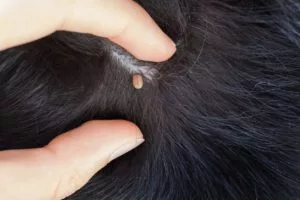How to Get a Tick Off of a Dog
If you’re a dog owner, you probably already know just how common it is for dogs to pick up ticks. When dogs spend time outdoors in the wilderness or even just in the backyard, it’s possible for ticks to latch onto them and get buried under their skin.
When your dog gets a tick, it’s also very important to learn how to remove it safely from your pet. Read through the information below to find out more. If you have any questions, call Veterinary Medical Center of St. Lucie County at (772) 337-8570.

Get Assistance
The first step in the process of removing ticks from your dog is simply to get help from someone else. Having the help of another adult or older child or teen in your household may make all the difference in getting ticks off of your dog’s body.
If you don’t have assistance or aren’t able to ask someone else for help, you might still be able to remove the tick if your dog is very calm. If not, however, the other steps listed here may become challenging.
Gather Your Materials
Next, be sure to gather all the materials you need before you get your dog. If your dog senses that something is amiss, they may be unwilling to settle down or may be untrusting when you try to call them over to you. Gathering your materials also makes it easier for you to reach what you need during the removal process.
You will need a pair of sharp tweezers, a washcloth soaked in warm soapy water, antibiotic ointment, and treats for your dog. You might also need a towel or a pee pad if your dog is the type to urinate when nervous.
Remove the Tick
Bring your dog over to the area where you’ve gathered the items you need. Give them plenty of treats to keep them distracted, then locate the tick on his body. If it has buried its head under the skin even just a little bit, you’ll need to grip the body and remove the tick by pulling straight up.
Do not pull at an angle to remove the tick, as this may cause the mouthparts to break off and remain in the dog’s skin. This, in turn, may cause further infection. If possible, save the tick in a plastic baggie to show your veterinarian.
Clean the Affected Area
With the tick completely removed, including the mouthparts, it’s time to clean your dog’s skin at the location of the bite. Use the washcloth soaked in warm soapy water to gently but thoroughly clean the area to reduce the risk of infections.
Although washing the area doesn’t reduce the risk of tickborne illness when your dog is bitten, it does make it easier for the skin to heal and also makes it less likely for your dog’s skin to develop a secondary infection.
Apply Ointment
Next, apply antibiotic ointment to the location of the tick bite if possible. Any over-the-counter antibiotic ointment is usually safe for dogs, although make sure you don’t use the type that contains lidocaine as an added ingredient. Additionally, try to avoid using the extra-strength variety, as it may contain more medication than is safe for your dog.
Don’t overdo it when applying antibiotic ointment to your dog’s tick bite; a thin layer will work perfectly. If your dog is just going to lick the ointment off immediately, it may be best to skip this step, unless you are able to stop him from licking it until it has dried.
Watch for Signs of Illness
Finally, with the tick completely removed and your dog’s skin treated properly, all that’s left to do is watch for signs of illness. If your dog starts to become sick, lethargic, weak, or shows any other symptoms, take them to the vet right away.
If you have been able to save the tick you removed from your dog in a plastic baggie, you might want to drop it off with the vet to be checked out. This way, the vet can tell you if your dog is at risk of any serious tickborne illnesses from the bite.
Getting a tick off of your dog is not too difficult, but it may require the assistance of a couple of adults to complete the process. If your dog is very unwilling to let you remove their ticks or if you have any other questions or concerns, you can always take your pet to a vet to have the rick removed instead.
The vet can also examine the tick and dog both to see if there is any indication of Lyme disease or other tickborne illness. Call us today at (772) 337-8570.
